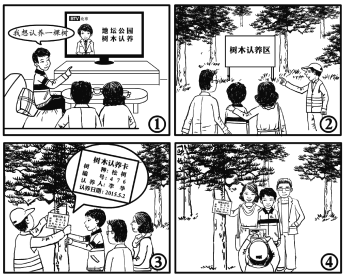ƒøƒ⁄»ð
°æƒø°ø∂ÃŒƒ∏ƒ¥Ì
ºŸ∂®”¢”ÔøŒ…œ¿œ ¶“™«ÛÕ¨◊¿÷ƺ‰Ωªªª–Þ∏ƒ◊˜Œƒ£¨«Îƒ„–Þ∏ƒƒ„Õ¨◊¿–¥µƒ“‘œ¬◊˜Œƒ°£Œƒ÷–π≤”–10¥¶”Ô—‘¥ÌŒÛ£¨√øæ‰÷–◊Ó∂ý”–¡Ω¥¶°£√ø¥¶¥ÌŒÛΩˆ…ʺ∞“ª∏ˆµ•¥ µƒ‘ˆº”°¢…æ≥˝ªÚ–Þ∏ƒ°£
‘ˆº”£∫‘⁄»±¥ ¥¶º”“ª∏ˆ¬©◊÷∑˚∫≈£®![]() £©£¨≤¢‘⁄∆‰œ¬√Ê–¥≥ˆ∏√º”µƒ¥ °£
£©£¨≤¢‘⁄∆‰œ¬√Ê–¥≥ˆ∏√º”µƒ¥ °£
…æ≥˝£∫∞—∂ý”ýµƒ¥ ”√–±œþ(£Ð)ªÆµÙ°£
–Þ∏ƒ£∫‘⁄¥Ìµƒ¥ œ¬ªÆ“ª∫·œþ£¨≤¢‘⁄∏√¥ œ¬√Ê–¥≥ˆ–Þ∏ƒ∫Ûµƒ¥ °£
◊¢“‚£∫1£Æ√ø¥¶¥ÌŒÛº∞∆‰–Þ∏ƒæ˘ΩˆœÞ“ª¥ £ª
2£Æ÷ª‘ –Ì–Þ∏ƒ10¥¶£¨∂ý’þ£®¥”µ⁄11¥¶∆£©≤ªº∆∑÷°£
It was the break time, and the students was playing on the playground. Jack was playing the basketball with a group of boys while Lily told him that the headmaster wanted to see him. Jack seemed confusing. He thought, °∞I did something wrong. Why did the headmaster ask me to his office?°± Then he walked there nervously. In his surprise, the headmaster praised him, as he learned from some teachers that Jack usually volunteered to helping others. The headmaster told Jack he had set example to other students. Heard that, Jack was very happy. He promised the headmaster that he will continue to be a caring student.
°æ1°ø°æ2°ø°æ3°ø°æ4°ø°æ5°ø
°æ6°ø°æ7°ø°æ8°ø°æ9°ø°æ10°ø
°æ¥∞∏°ø
°æ1°øwas playing - were
°æ2°øplaying the basketball »•µÙthe
°æ3°øwhile ®Cwhen
°æ4°øconfusing ®C confused
°æ5°øsomething ®C nothing
°æ6°øIn ®C To
°æ7°øhelping ®C help
°æ8°øexample«∞º”an
°æ9°øHeard°™Hearing
°æ10°øwill - would
°æΩ‚Œˆ°ø ‘Â∑÷Œˆ£∫ Õ®π˝±æŒƒµƒ‘ƒ∂¡∫Õ∏ƒ¥Ì£¨øº≤È—ß…˙µƒπÃ∂®¥Ó≈‰∫Õ ±Ã¨∫Õ∑«ŒΩ”Ô∂Ø¥ µƒ”√∑®°¢¡¨¥ °¢π⁄¥ µƒ«¯±µ»°£
°æ1°øwas playing °˙ were øº≤È÷˜ŒΩ“ª÷¬°£ the students «∏¥ ˝£¨∫Û√ʵƒbe∂Ø¥ “ª∏ˆ”√were ∫Õplaying ππ≥…π˝»•Ω¯–– ±°£
°æ2°øplaying the basketball »•µÙthe øº≤Èπ⁄¥ µƒ”√∑®°£ «Ú¿ý‘À∂Ø«∞≤ª”√π⁄¥ £¨¥Ú¿∫«Ú: play basketball°£
°æ3°øwhile °˙ when øº≤ÈπÃ∂®”√∑®°£ be doing when «πÃ∂®”√∑®£¨“‚Àº «£∫ƒ≥ ¬’˝‘⁄∑¢…˙’‚ ±°≠°≠°£
°æ4°øconfusing °˙ confused øº≤È–Œ»ð¥ µƒ«¯±°£confusing¡Ó»À¿ßªÛµƒ£ªconfused∏–µΩ¿ßªÛµƒ°£æ‰“‚£∫JackÀ∆∫ı∫пߪÛ≤ªΩ‚°£
°æ5°øsomething °˙ nothing øº≤È¥˙¥ µƒ”√∑®°£Œ“√ª”–◊ˆ¥Ì ¬°£°∞√ª ¬°±”√¥˙¥ £∫nothing°£
°æ6°øIn °˙ To øº≤ÈπÃ∂®¥ ◊È°£ to one°Øs surprise µƒ“‚Àº «£∫¡Ó»Àæ™∆ʵƒ «°£
°æ7°øhelping °˙ help øº≤È∂Ø¥ µƒ”√∑®°£volunteer to do £¨to∫Û”√∂Ø¥ ‘≠–Œ°£
°æ8°øexample«∞º”an øº≤È√˚¥ µƒ”√∑®°£example «ø… ˝√˚¥ £¨set an example to ∏¯°≠°≠ ˜¡¢“ª∏ˆ∞Ò—˘°£
°æ9°øHeard °˙ Hearing øº≤È∑«ŒΩ”Ô∂Ø¥ °£Hear ”…÷˜”ÔJack∑¢≥ˆ£¨”¶∏√”√-ing–Œ Ω°£-ed ±Ì±ª∂Ø°£
°æ10°øwill °˙ would øº≤È ±Ã¨“ª÷¬°£÷˜æ‰∂Ø¥ promised «π˝»• Ω£¨À˘“‘±ˆ”Ô¥”扔¶∏√”√π˝»•Ω´¿¥ ±£¨would º”∂Ø¥ ‘≠–Œ°£





